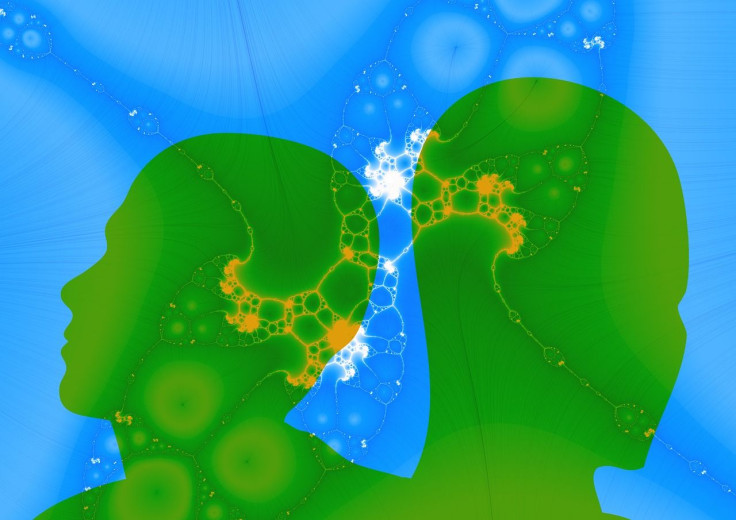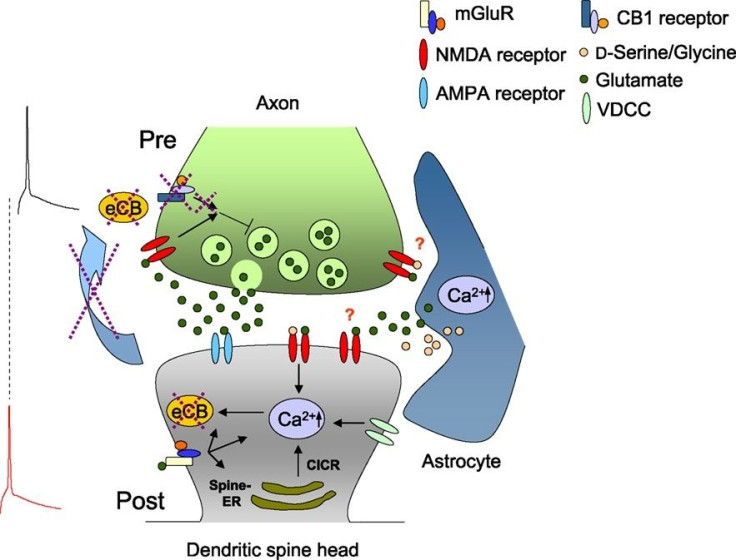Drugs And Your Brain: How Different Medications Affect Neurons


This question originally appeared on Quora. Answer by Yohan John, PhD in Cognitive and Neural Systems from Boston University.
What exact effects do drugs have on neurons? Do they just make them slower or faster, or is there more to it? There's definitely a lot more to it! The effect depends on the drug as well as the neuron.
Drugs can broadly be divided into different types based on their mechanism of action. Here are some common types:
- An agonist binds to a receptor and activates it
- An antagonist binds to a receptor and blocks its activation
- An inverse agonist binds to a receptor and causes an opposite reaction to that of an agonist
- A reuptake inhibitor prevents the reuptake or recycling on a neurotransmitter, prolonging its effects in the synapse
Agonists, antagonists and inverse agonists are molecules that bind to one or more types of receptor. A receptor is a type of protein complex embedded in a cell that receives signals from outside the cell. The strength with which a molecule (or "ligand") binds to a receptor is known as the binding affinity of the molecule for the receptor. If a molecule has high affinity for a receptor, it will reside at the binding site for a longer time than a molecule with a low affinity.
There are two kinds of receptor located at the synapse connecting two neurons: presynaptic and postsynaptic. There are also extrasynaptic receptors on the cell body, but not located at synapses. Drug molecules may bind to one or more of these types of receptors. This diagram captures some of the diversity and complexity of receptors:

The immediate effects of activating a channel can be described as:
- Excitation: Increasing the voltage of the cell and potentially leading to firing. Glutamate is the chief excitatory neurotransmitter
- Inhibition: Decreasing the voltage of the cell and potentially reducing firing. GABA is the chief inhibitory neurotransmitter
- Modulation: More complex changes that are not always purely excitatory or inhibitory. The neuromodulators are the most "famous" neurotransmitters: dopamine, norepinephrine, serotonin, and acetylcholine.
The effect of a receptor can depend on overall properties of the neuron, such as its concentrations of various ions. Here is a fascinating example. The neurotransmitter GABA, which is inhibitory in adults, is actually excitatory during development. This is apparently caused by the delayed expression of a chloride exporter during development. There may even be situations in adulthood, or in specific locations in the brain, when GABA becomes excitatory.
Another factor that influences the effect of a drug on a neuron is the time scale of the receptor's opening and closing dynamics. From a mechanistic perspective there are two families of postsynaptic receptors: ionotropic and metabotropic. Ionotropic receptors directly trigger openings and closings of ion channels. Metabotropic receptors also involve ion channels, but their effects are mediated by complicated second messenger chemicals. Their effects tend to be slower and longer lasting than those of ionotropic receptors. For example, the effects of GABA-A, an ionotropic receptor, range from a couple of milliseconds to tens of milliseconds, whereas the effects of GABA-B, a metabotropic receptor, can be an order of magnitude (or ten times) slower, and therefore more long-lasting. A similarly wide difference in timing exists for glutamatergic receptors: NMDA receptors have longer-lasting effects than non-NMDA receptors such as AMPA receptors.
Beyond the effects of ion channel openings and closings on the voltage of the cell, receptor binding can trigger the second messenger system, which can have far-reaching effects on the properties of the cell. This includes the structure of the cell. Dopamine is known to contribute to synaptic learning, meaning that it contributes to the formation and strengthening of synapses. Dopamine agonists (such as amphetamine) can also increase dendrite arborization of a subgroup of dopaminergic neurons. Serotonin can also have morphological effects.
I found these effects just by googling the names of transmitters and the word "arborization" — I can't search for every combination of drug and effect because that would be a combinatoric explosion. But as an initial guess, assume that most psychoactive drugs and neurotransmitters can affect the voltage and the structure of (at least some) neurons.
Some drugs do not directly affect receptors, but instead affect the process of transmitter reuptake. For example, selective serotonin reuptake inhibitors (SSRIs) such as fluoxetone Prozac limit the reabsorption of the neurotransmitter serotonin back into the presynaptic neuron.
Other drugs affect the process by which neurotransmitters are broken down. For example, Monoamine oxidase inhibitors (MAOIs) inhibit the activity of monoamine oxidase, thus reducing the breakdown of monoamine transmitters such as dopamine, noradrenaline, serotonin and melatonin.
This answer doesn’t really cover the mechanisms of action of all known psychoactive drugs. Each chemical can have unique effects on neurons and other cells. You really have to study each chemical on its own to understand it: it’s just not possible to make blanket statements about all drugs. As if this weren’t complicated enough, research suggests that combinations of different drugs can have distinct effects from a drug acting in isolation.
If you really want to explore the complexity of drug effects, go to the Wikipedia page of a drug (pick any one!) and skim the sections on pharmacology. The rabbit hole goes very deep!
Image Source: Presynaptic NMDA receptors and spike timing-dependent long-term depression at cortical synapses
More from Quora:
Published by Medicaldaily.com



























